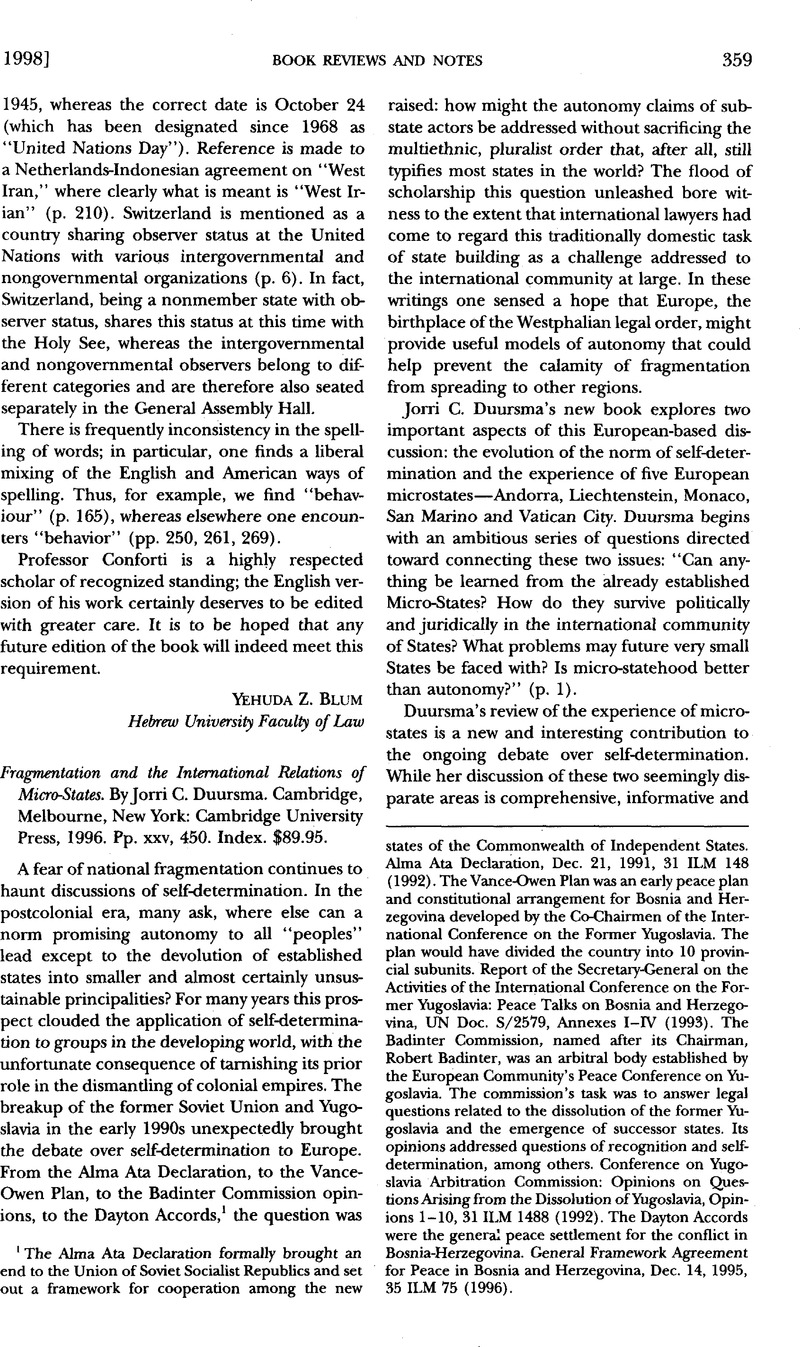No CrossRef data available.
Article contents
Fragmentation and the International Relations of Micro-States. By jorri C. Duursma. Cambridge, Melbourne, New York: Cambridge University Press, 1996. Pp. xxv, 450. Index. $89.95.
Published online by Cambridge University Press: 27 February 2017
Abstract

- Type
- Book Reviews and Notes
- Information
- Copyright
- Copyright © American Society of International Law 1998
References
1 The Alma Ata Declaration formally brought an end to the Union of Soviet Socialist Republics and set out a framework for cooperation among the new states of the Commonwealth of Independent States. Alma Ata Declaration, Dec. 21, 1991, 31 ILM 148 (1992). The Vance-Owen Plan was an early peace plan and constitutional arrangement for Bosnia and Herzegovina developed by the Co-Chairmen of the International Conference on the Former Yugoslavia. The plan would have divided the country into 10 provincial subunits. Report of the Secretary-General on the Activities of the International Conference on the Former Yugoslavia: Peace Talks on Bosnia and Herzegovina, UN Doc. S/2579, Annexes I-IV (1993). The Badinter Commission, named after its Chairman, Robert Badinter, was an arbitral body established by the European Community’s Peace Conference on Yugoslavia. The commission’s task was to answer legal questions related to the dissolution of the former Yugoslavia and the emergence of successor states. Its opinions addressed questions of recognition and selfdetermination, among others. Conference on Yugoslavia Arbitration Commission: Opinions on Questions Arising from the Dissolution of Yugoslavia, Opinions 1–10, 31 ILM 1488 (1992). The Dayton Accords were the general peace settlement for the conflict in Bosnia-Herzegovina. General Framework Agreement for Peace in Bosnia and Herzegovina, Dec. 14, 1995, 35 ILM 75 (1996).
2 For a discussion of why third-party recognition of the states emerging from the former Soviet Union and Yugoslavia did not meaningfully advance an understanding of the right to self-determination, see Gregory, H. Fox, Self-Determination in the Post-Cold War Era: A New Internal Focus? , 16 Mich. J. Int’l L. 733, 743–47 (1995)Google Scholar.
3 Admission of a State to the United Nations (Charter, Art. 4), 1948 ICJ Rep. 57 (Advisory Opinion of May 28).
4 Article 103 of the UN Charter states: “In the event of a conflict between the obligations of the Members of the United Nations under the present Charter and their obligations under any other international agreement, their obligations under the present Charter shall prevail.”




